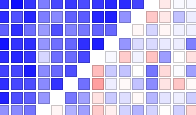
Sahar Azimian, Farah Torkamani Azar, Seyed Ali Amirshahi, "How Good is Too Good? A Subjective Study on Over Enhancement of Images" in Proc. IS&T 29th Color and Imaging Conf., 2021, pp 83 - 88, https://doi.org/10.2352/issn.2169-2629.2021.29.83

Sahar Azimian, Farah Torkamani Azar, Seyed Ali Amirshahi, "How Good is Too Good? A Subjective Study on Over Enhancement of Images" in Proc. IS&T 29th Color and Imaging Conf., 2021, pp 83 - 88, https://doi.org/10.2352/issn.2169-2629.2021.29.83